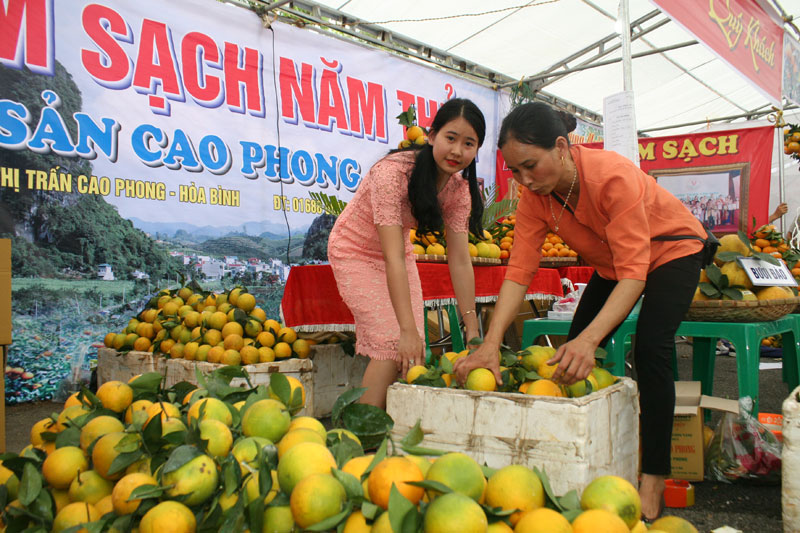(HBO) – The Cao Phong orange, renowned for its tastefulness, is facing the pressure of competition, price nosedive, and poor sales. However, farmers and managerial agencies believe that if relevant parties comply with cultivation planning and safe production processes and maintain the fruit brand, the local specialty can still develop strongly and generate economic benefits for farmers.
 The Cao Phong orange harvest season lasts from
September to May.
The Cao Phong orange harvest season lasts from
September to May.
The Cao Phong orange farming hub has been
grappling with poor sales this year. Unlike last year, traders have come to Cao
Phong township to buy oranges not in bulk, but mostly in small quantity at
about 10,000 – 13,000 VND per kg, down 3,000 – 5,000 VND per kg from the same
period last year.
The price decline and poor sales are attributed
to the rapid expansion of the cultivation area of orange and other citrus fruit
trees. Apart from Cao Phong, many other localities in Hoa Binh as well as
provinces in northern Vietnam have also developed their orange farming area
while there remain many problems in processing and sale.
Cao Phong district is currently home to 2,815ha
of citrus fruit trees, including 2,016ha currently harvestable. The output in
the 2020-2021 crop is expected at more than 30,000 tonnes, about 40 percent of
which has been sold.
Despite low prices, such prestigious growers as
the Manh Khoa and Hung Loi cooperatives and the Thanh Loan, Hue 338, Thanh
Dang, Nhien Dang, and Nam Thuy orange stores have managed to sell almost 1,000
tonnes at 20,000 – 25,000 VND per kg, equal to last year’s prices. The genuine
Cao Phong orange has still been sold well in Hanoi at a price of 25,000 –
30,000 VND per kg.
Nguyen Quoc Toan, who has farmed orange for many
years in Cao Phong township, had had most of his oranges sold before the Lunar
New Year holiday. His family owns 2ha of orange trees, half of which are the
Canh orange and the rest is the yellow-flesh orange, with the productivity reaching
about 25 tonnes per ha. The Canh orange is priced at 22,000 VND per kg and the
yellow-flesh orange 16,000 VND per kg when they are sold at the garden,
generating an income of several hundreds of millions of VND in the crop.
Toan is known as a person experienced in
intensive orange farming and taking concerted solutions to protect the brand
and develop the geographical indication for the fruit as guided by the
district’s authorities, including applying sci-tech advances and adhering to
VietGAP and GlobalGAP standards in cultivation.
Pham Thanh Truong from the agriculture and rural
development division of Cao Phong district said if farmers seriously comply
with VietGAP standards and plan farming well, even with current prices, orange
is still a key product promising chances to get rich for its growers.
According to the Cao Phong district People’s
Committee, the maintenance of the Cao Phong orange brand has become more urgent
than ever in the face of poor sales and origin fraud. Local authorities are reviewing
and making development plans for each citrus fruit tree variety, aiming to keep
the orange and tangerine area at 2,500ha with an output of 30,000 tonnes in the
2020 – 2025 period.
Cao Phong will work to strictly manage farming
steps, from selecting varieties, extending the cultivation period to developing
specialty fruits like the Canh orange to meet consumers’ demand. It will also
ensure better management of the geographical indication for the Cao Phong
orange, encourage traders of local oranges and tangerines to commit not to
mixing fruits grown in other places with Cao Phong oranges or tangerines to
sell, attract investment to farming the fruits and forming value chains, build
wholesale markets with refrigerated warehouses, promote the adherence to
VietGAP standards, and work to help its fruits enter supermarkets, hotels, and
restaurants as well as foreign markets./.



 The Cao Phong orange harvest season lasts from
September to May.
The Cao Phong orange harvest season lasts from
September to May.